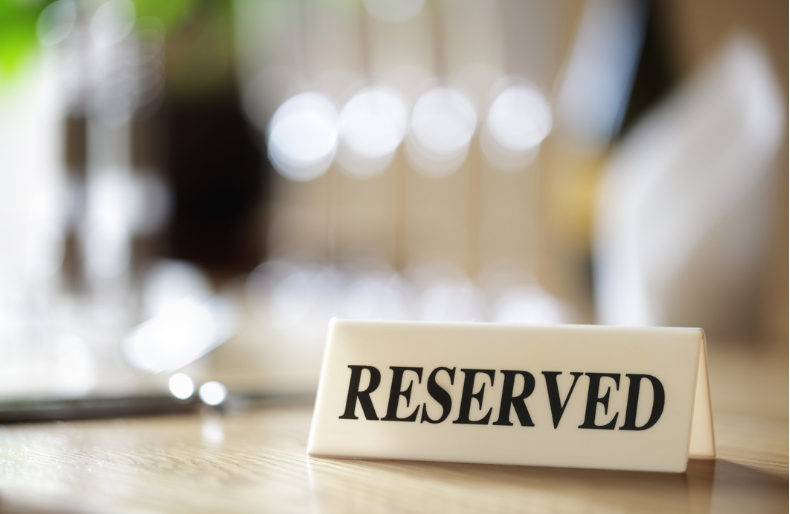The pros and cons of taking restaurant reservations
To take reservations or not take reservations, that is the question. The answer, however, is not that simple.
Traditionally, reservations are associated with fine dining. After all, when is the last time you made a reservation at a fast-food restaurant?
But not all fine dining establishments take reservations. As a restaurant owner or manager, how do you decide what’s best for your restaurant? To help you decide (or to change your policy if you already have one in place), here are a few pros and cons of each.
Pros
Patrons are guaranteed to get a table, even during peak times. They also feel “special” when bypassing those waiting in line.
You’ll know exactly how many people to expect and at what time; this will help with staffing, food ordering and overall service.
Reservations may entice people to try your restaurant, expanding your customer base.
Patrons can easily plan for special occasions. Special occasion guests may then feel more enticed to try something different like foie gras or escargot
Reservations often are for larger parties, which means more money for you, bigger tips for your staff. Although serving a larger party could be challenge, prepping for this using premium prepared foods like appetizers or bread can help make the process easier and smoother for all involved.
Cons
No-shows cost you money (but beware of overbooking, which can backfire). You can charge a set fee for no-shows or last-minute cancellations, but this can leave a bad taste with customers.)
You may turn away paying customers, losing business to no-shows.
Those with a reservation may change the number in their party, wreaking havoc on your schedule.
Patrons who linger may cause those with reservations to wait, which is also bad for your brand.
Reservation tracking systems can be expensive. Apps such as Open Table can cost a couple hundred dollars a month, plus a fee per reservation.
For many restaurants, the answer may fall somewhere in between. A current trend is call-ahead seating, where a customer calls on the way to the restaurant to be placed on a waiting list. This reduces the wait time when the dining party arrives. Some restaurants set aside a couple of tables for walk-ins (you may want to keep the best tables, however, for reservations). Other restaurants only accept reservations for large parties, say eight or more.
Perhaps the best way to decide what works for your restaurant is to test both approaches. If the weekends are your busiest times, then you might want to accept reservations on weekends only. For restaurants with a seasonal business, such as in beach towns, reservations may make sense only during the summer.

